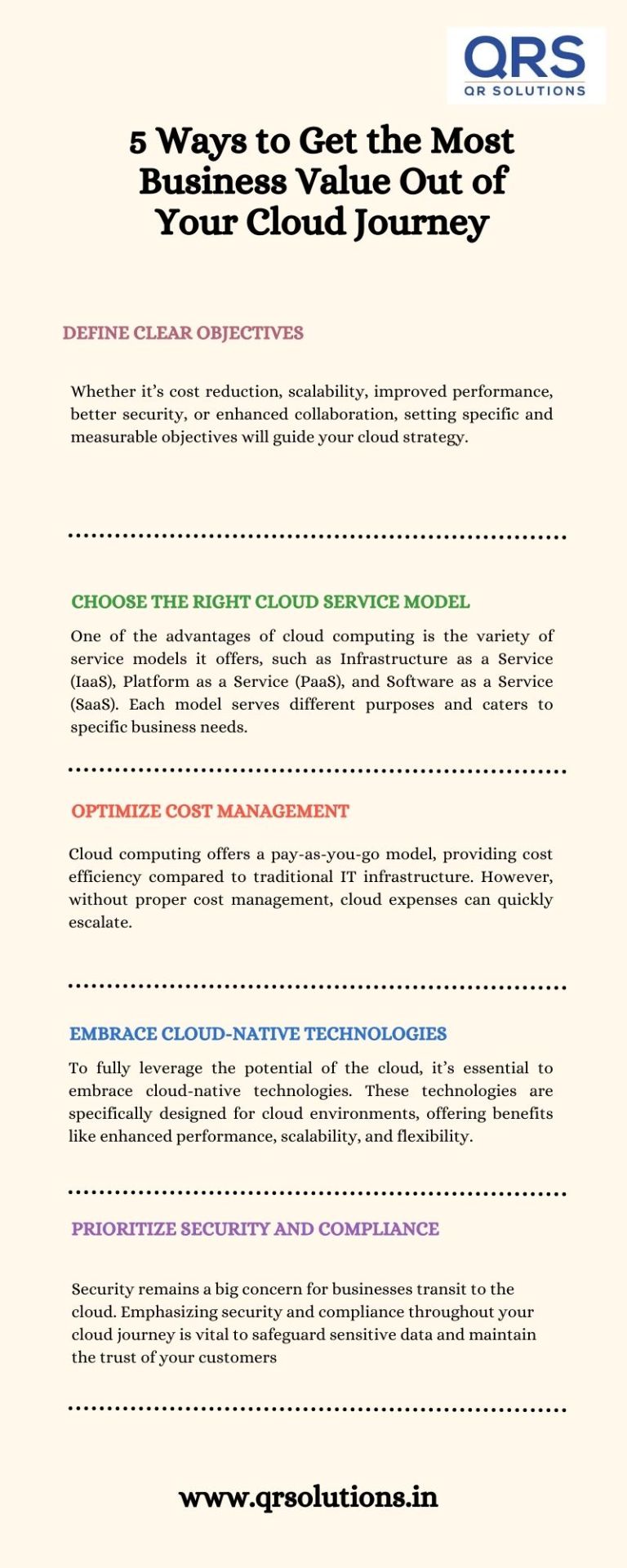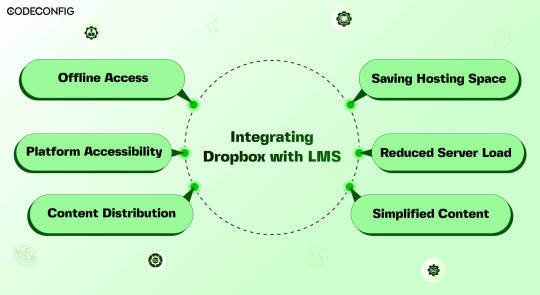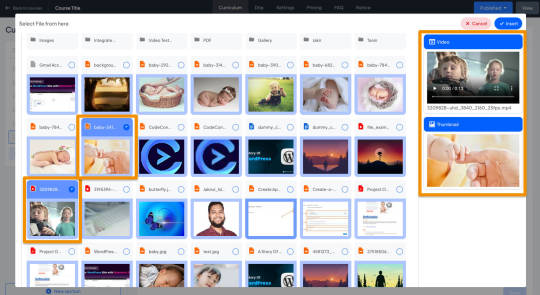#Cost-effective cloud utilization
Explore tagged Tumblr posts
Text

In today’s fast-paced digital landscape, the cloud has emerged as a transformative technology that empowers businesses with flexibility, scalability, and cost-effectiveness. Migrating to the cloud is no longer an option but a necessity to stay competitive.
#Cloud migration strategies#Business value optimization#Cloud journey best practices#Cloud adoption benefits#Cost-effective cloud utilization#Cloud-native applications#Cloud scalability#Hybrid cloud solutions#Cloud security measures#Cloud cost management#Cloud performance monitoring#Cloud vendor selection#Cloud infrastructure optimization#Cloud data management#Agile cloud transformation
0 notes
Text
The rapid growth of the technology industry and the increasing reliance on cloud computing and artificial intelligence have led to a boom in the construction of data centers across the United States. Electric vehicles, wind and solar energy, and the smart grid are particularly reliant on data centers to optimize energy utilization. These facilities house thousands of servers that require constant cooling to prevent overheating and ensure optimal performance. Unfortunately, many data centers rely on water-intensive cooling systems that consume millions of gallons of potable (“drinking”) water annually. A single data center can consume up to 3 million to 5 million gallons of drinking water per day, enough to supply thousands of households or farms. The increasing use and training of AI models has further exacerbated the water consumption challenges faced by data centers.
[...]
The drinking water used in data centers is often treated with chemicals to prevent corrosion and bacterial growth, rendering it unsuitable for human consumption or agricultural use. This means that not only are data centers consuming large quantities of drinking water, but they are also effectively removing it from the local water cycle. Dry air reduces the risk of corrosion and electrical issues in the sensitive equipment in the data centers. The lack of humidity in water-stressed regions, such as the American Southwest, makes it an attractive location for data centers. This means that the regions in which it is “best” to locate a data center due to its arid environment has the highest marginal cost in terms of water consumption. In the Phoenix area alone, there are 58 data centers. If each data center uses 3 million gallons of water per day for cooling, that equates to over 170 million gallons of drinking water used per day for cooling data centers. This massive consumption of drinking water for data center cooling puts a strain on the already fragile water supply and raises ethical questions about prioritizing the needs of tech giants over the basic needs of residents and agriculture.
[...]
Optimizing renewable power with AI and data centers at the expense of increasing water consumption is not a sustainable solution. Prioritizing one aspect of sustainability, such as reducing carbon emissions, while neglecting another crucial resource like water creates an illusion of sustainability. In reality, this can lead to unsustainable practices that can have severe unintended consequences for individuals and farmers, especially in water-stressed regions.
72 notes
·
View notes
Text
Top 5 Reasons Companies Partner with Joaquin Fagundo for IT Strategy
In today’s fast-paced digital world, businesses are constantly evolving to keep up with the changing technological landscape. From cloud migrations to IT optimization, many organizations are turning to expert technology executives to guide them through complex transformations. One such executive who has gained significant recognition is Joaquin Fagundo, a technology leader with over two decades of experience in driving digital transformation. Having worked at prominent firms like Google, Capgemini, and Tyco, Fagundo has built a reputation for delivering large-scale, innovative solutions to complex IT challenges. But what makes Joaquin Fagundo such a sought-after leader in IT strategy? Here are the Top 5 Reasons Companies Partner with Joaquin Fagundo for IT Strategy.

1. Proven Expertise in Digital Transformation
Joaquin Fagundo’s career spans more than 20 years, during which he has worked on high-stakes projects that require a deep understanding of digital transformation. His experience spans various industries, helping businesses leverage cutting-edge technologies to improve operations, enhance efficiency, and streamline processes.
Fagundo has helped organizations transition from legacy systems to modern cloud-based infrastructure, allowing them to scale effectively and stay competitive in an increasingly digital world. His hands-on experience in cloud strategy, automation, and enterprise IT makes him an invaluable asset for any business looking to adapt to new technologies. Companies partner with Joaquin Fagundo because they know they will receive strategic insights and actionable plans for driving their digital initiatives forward.
2. Strategic Cloud Expertise for Scalable Solutions
Cloud technology is no longer a trend—it is the backbone of modern businesses. Joaquin Fagundo has an extensive background in cloud strategy, having successfully led major cloud migrations for several large organizations. Whether it's migrating to a public cloud, optimizing hybrid infrastructures, or implementing cloud-native applications, Fagundo’s expertise helps businesses navigate these complexities with ease.
Companies partnering with Joaquin Fagundo can expect a tailored cloud strategy that ensures scalability and cost-efficiency. His deep knowledge of cloud services like AWS, Google Cloud, and Microsoft Azure enables him to develop bespoke solutions that meet specific business needs while minimizing downtime and disruption. His approach not only focuses on the technical aspects of cloud migration but also on aligning cloud solutions with overarching business goals, ensuring that companies can reap the full benefits of cloud technology.
3. Strong Track Record of Driving Operational Efficiency
Operational efficiency is a top priority for most businesses today. Companies partner with Joaquin Fagundo because of his exceptional ability to optimize IT operations and implement automation technologies that enhance productivity while reducing costs. Whether it’s through automating routine tasks or improving infrastructure management, Fagundo’s strategies enable organizations to streamline their operations and focus on growth.
Fagundo’s leadership in infrastructure optimization has allowed businesses to reduce waste, lower operational expenses, and improve the performance of their IT systems. His expertise in automation tools and AI-driven insights empowers businesses to become more agile and responsive to market demands. By partnering with Fagundo, companies are able to make smarter decisions, optimize resource utilization, and achieve long-term sustainability.
4. Business-Technology Alignment
One of the most significant challenges that organizations face is aligning their IT strategies with broader business goals. While technology can drive innovation and efficiency, it’s only effective when it is tightly integrated with the company’s vision and objectives. Joaquin Fagundo understands this concept deeply and emphasizes the importance of business-technology alignment in every project he undertakes.
Fagundo’s approach to IT strategy is not just about implementing the latest technology, but also ensuring that it supports the company’s strategic direction. He works closely with leadership teams to identify key business objectives and tailors technology solutions that drive measurable business outcomes. This focus on alignment helps companies ensure that every IT investment contributes to long-term growth, profitability, and competitive advantage.
5. Trusted Leadership and Change Management Expertise
Digital transformation and IT strategy changes often require a significant cultural shift within an organization. Change management is a critical component of any IT transformation, and this is an area where Joaquin Fagundo excels. Over the years, Fagundo has successfully led large teams through organizational changes, helping them navigate complex transformations with minimal resistance.
Fagundo’s leadership skills are a key reason why companies partner with him. He is known for his ability to inspire teams, foster collaboration, and lead through uncertainty. His people-centric approach to technology implementation ensures that employees at all levels are equipped with the knowledge and tools they need to succeed. Whether it’s through training sessions, workshops, or mentorship, Fagundo prioritizes the human aspect of IT transformation, making the process smoother and more sustainable for everyone involved.
Conclusion
Partnering with a technology executive like Joaquin Fagundo can provide businesses with a competitive edge in an increasingly digital world. With his deep technical expertise, strategic insight, and ability to align technology with business goals, Fagundo has helped countless organizations successfully navigate their IT challenges. Whether it's through cloud strategy, digital transformation, or operational optimization, Joaquin Fagundo is the go-to leader for companies looking to stay ahead of the curve.
If your company is ready to accelerate its digital transformation journey and leverage cutting-edge technology for long-term success, partnering with Joaquin Fagundo could be the first step toward achieving your business goals. With his proven track record, expertise, and leadership, Fagundo is the ideal partner to guide your organization into the future of IT strategy.
2 notes
·
View notes
Text
The Future of AI: What’s Next in Machine Learning and Deep Learning?

Artificial Intelligence (AI) has rapidly evolved over the past decade, transforming industries and redefining the way businesses operate. With machine learning and deep learning at the core of AI advancements, the future holds groundbreaking innovations that will further revolutionize technology. As machine learning and deep learning continue to advance, they will unlock new opportunities across various industries, from healthcare and finance to cybersecurity and automation. In this blog, we explore the upcoming trends and what lies ahead in the world of machine learning and deep learning.
1. Advancements in Explainable AI (XAI)
As AI models become more complex, understanding their decision-making process remains a challenge. Explainable AI (XAI) aims to make machine learning and deep learning models more transparent and interpretable. Businesses and regulators are pushing for AI systems that provide clear justifications for their outputs, ensuring ethical AI adoption across industries. The growing demand for fairness and accountability in AI-driven decisions is accelerating research into interpretable AI, helping users trust and effectively utilize AI-powered tools.
2. AI-Powered Automation in IT and Business Processes
AI-driven automation is set to revolutionize business operations by minimizing human intervention. Machine learning and deep learning algorithms can predict and automate tasks in various sectors, from IT infrastructure management to customer service and finance. This shift will increase efficiency, reduce costs, and improve decision-making. Businesses that adopt AI-powered automation will gain a competitive advantage by streamlining workflows and enhancing productivity through machine learning and deep learning capabilities.
3. Neural Network Enhancements and Next-Gen Deep Learning Models
Deep learning models are becoming more sophisticated, with innovations like transformer models (e.g., GPT-4, BERT) pushing the boundaries of natural language processing (NLP). The next wave of machine learning and deep learning will focus on improving efficiency, reducing computation costs, and enhancing real-time AI applications. Advancements in neural networks will also lead to better image and speech recognition systems, making AI more accessible and functional in everyday life.
4. AI in Edge Computing for Faster and Smarter Processing
With the rise of IoT and real-time processing needs, AI is shifting toward edge computing. This allows machine learning and deep learning models to process data locally, reducing latency and dependency on cloud services. Industries like healthcare, autonomous vehicles, and smart cities will greatly benefit from edge AI integration. The fusion of edge computing with machine learning and deep learning will enable faster decision-making and improved efficiency in critical applications like medical diagnostics and predictive maintenance.
5. Ethical AI and Bias Mitigation
AI systems are prone to biases due to data limitations and model training inefficiencies. The future of machine learning and deep learning will prioritize ethical AI frameworks to mitigate bias and ensure fairness. Companies and researchers are working towards AI models that are more inclusive and free from discriminatory outputs. Ethical AI development will involve strategies like diverse dataset curation, bias auditing, and transparent AI decision-making processes to build trust in AI-powered systems.
6. Quantum AI: The Next Frontier
Quantum computing is set to revolutionize AI by enabling faster and more powerful computations. Quantum AI will significantly accelerate machine learning and deep learning processes, optimizing complex problem-solving and large-scale simulations beyond the capabilities of classical computing. As quantum AI continues to evolve, it will open new doors for solving problems that were previously considered unsolvable due to computational constraints.
7. AI-Generated Content and Creative Applications
From AI-generated art and music to automated content creation, AI is making strides in the creative industry. Generative AI models like DALL-E and ChatGPT are paving the way for more sophisticated and human-like AI creativity. The future of machine learning and deep learning will push the boundaries of AI-driven content creation, enabling businesses to leverage AI for personalized marketing, video editing, and even storytelling.
8. AI in Cybersecurity: Real-Time Threat Detection
As cyber threats evolve, AI-powered cybersecurity solutions are becoming essential. Machine learning and deep learning models can analyze and predict security vulnerabilities, detecting threats in real time. The future of AI in cybersecurity lies in its ability to autonomously defend against sophisticated cyberattacks. AI-powered security systems will continuously learn from emerging threats, adapting and strengthening defense mechanisms to ensure data privacy and protection.
9. The Role of AI in Personalized Healthcare
One of the most impactful applications of machine learning and deep learning is in healthcare. AI-driven diagnostics, predictive analytics, and drug discovery are transforming patient care. AI models can analyze medical images, detect anomalies, and provide early disease detection, improving treatment outcomes. The integration of machine learning and deep learning in healthcare will enable personalized treatment plans and faster drug development, ultimately saving lives.
10. AI and the Future of Autonomous Systems
From self-driving cars to intelligent robotics, machine learning and deep learning are at the forefront of autonomous technology. The evolution of AI-powered autonomous systems will improve safety, efficiency, and decision-making capabilities. As AI continues to advance, we can expect self-learning robots, smarter logistics systems, and fully automated industrial processes that enhance productivity across various domains.
Conclusion
The future of AI, machine learning and deep learning is brimming with possibilities. From enhancing automation to enabling ethical and explainable AI, the next phase of AI development will drive unprecedented innovation. Businesses and tech leaders must stay ahead of these trends to leverage AI's full potential. With continued advancements in machine learning and deep learning, AI will become more intelligent, efficient, and accessible, shaping the digital world like never before.
Are you ready for the AI-driven future? Stay updated with the latest AI trends and explore how these advancements can shape your business!
#artificial intelligence#machine learning#techinnovation#tech#technology#web developers#ai#web#deep learning#Information and technology#IT#ai future
2 notes
·
View notes
Text
How Python Powers Scalable and Cost-Effective Cloud Solutions

Explore the role of Python in developing scalable and cost-effective cloud solutions. This guide covers Python's advantages in cloud computing, addresses potential challenges, and highlights real-world applications, providing insights into leveraging Python for efficient cloud development.
Introduction
In today's rapidly evolving digital landscape, businesses are increasingly leveraging cloud computing to enhance scalability, optimize costs, and drive innovation. Among the myriad of programming languages available, Python has emerged as a preferred choice for developing robust cloud solutions. Its simplicity, versatility, and extensive library support make it an ideal candidate for cloud-based applications.
In this comprehensive guide, we will delve into how Python empowers scalable and cost-effective cloud solutions, explore its advantages, address potential challenges, and highlight real-world applications.
Why Python is the Preferred Choice for Cloud Computing?
Python's popularity in cloud computing is driven by several factors, making it the preferred language for developing and managing cloud solutions. Here are some key reasons why Python stands out:
Simplicity and Readability: Python's clean and straightforward syntax allows developers to write and maintain code efficiently, reducing development time and costs.
Extensive Library Support: Python offers a rich set of libraries and frameworks like Django, Flask, and FastAPI for building cloud applications.
Seamless Integration with Cloud Services: Python is well-supported across major cloud platforms like AWS, Azure, and Google Cloud.
Automation and DevOps Friendly: Python supports infrastructure automation with tools like Ansible, Terraform, and Boto3.
Strong Community and Enterprise Adoption: Python has a massive global community that continuously improves and innovates cloud-related solutions.
How Python Enables Scalable Cloud Solutions?
Scalability is a critical factor in cloud computing, and Python provides multiple ways to achieve it:
1. Automation of Cloud Infrastructure
Python's compatibility with cloud service provider SDKs, such as AWS Boto3, Azure SDK for Python, and Google Cloud Client Library, enables developers to automate the provisioning and management of cloud resources efficiently.
2. Containerization and Orchestration
Python integrates seamlessly with Docker and Kubernetes, enabling businesses to deploy scalable containerized applications efficiently.
3. Cloud-Native Development
Frameworks like Flask, Django, and FastAPI support microservices architecture, allowing businesses to develop lightweight, scalable cloud applications.
4. Serverless Computing
Python's support for serverless platforms, including AWS Lambda, Azure Functions, and Google Cloud Functions, allows developers to build applications that automatically scale in response to demand, optimizing resource utilization and cost.
5. AI and Big Data Scalability
Python’s dominance in AI and data science makes it an ideal choice for cloud-based AI/ML services like AWS SageMaker, Google AI, and Azure Machine Learning.
Looking for expert Python developers to build scalable cloud solutions? Hire Python Developers now!
Advantages of Using Python for Cloud Computing
Cost Efficiency: Python’s compatibility with serverless computing and auto-scaling strategies minimizes cloud costs.
Faster Development: Python’s simplicity accelerates cloud application development, reducing time-to-market.
Cross-Platform Compatibility: Python runs seamlessly across different cloud platforms.
Security and Reliability: Python-based security tools help in encryption, authentication, and cloud monitoring.
Strong Community Support: Python developers worldwide contribute to continuous improvements, making it future-proof.
Challenges and Considerations
While Python offers many benefits, there are some challenges to consider:
Performance Limitations: Python is an interpreted language, which may not be as fast as compiled languages like Java or C++.
Memory Consumption: Python applications might require optimization to handle large-scale cloud workloads efficiently.
Learning Curve for Beginners: Though Python is simple, mastering cloud-specific frameworks requires time and expertise.
Python Libraries and Tools for Cloud Computing
Python’s ecosystem includes powerful libraries and tools tailored for cloud computing, such as:
Boto3: AWS SDK for Python, used for cloud automation.
Google Cloud Client Library: Helps interact with Google Cloud services.
Azure SDK for Python: Enables seamless integration with Microsoft Azure.
Apache Libcloud: Provides a unified interface for multiple cloud providers.
PyCaret: Simplifies machine learning deployment in cloud environments.
Real-World Applications of Python in Cloud Computing
1. Netflix - Scalable Streaming with Python
Netflix extensively uses Python for automation, data analysis, and managing cloud infrastructure, enabling seamless content delivery to millions of users.
2. Spotify - Cloud-Based Music Streaming
Spotify leverages Python for big data processing, recommendation algorithms, and cloud automation, ensuring high availability and scalability.
3. Reddit - Handling Massive Traffic
Reddit uses Python and AWS cloud solutions to manage heavy traffic while optimizing server costs efficiently.
Future of Python in Cloud Computing
The future of Python in cloud computing looks promising with emerging trends such as:
AI-Driven Cloud Automation: Python-powered AI and machine learning will drive intelligent cloud automation.
Edge Computing: Python will play a crucial role in processing data at the edge for IoT and real-time applications.
Hybrid and Multi-Cloud Strategies: Python’s flexibility will enable seamless integration across multiple cloud platforms.
Increased Adoption of Serverless Computing: More enterprises will adopt Python for cost-effective serverless applications.
Conclusion
Python's simplicity, versatility, and robust ecosystem make it a powerful tool for developing scalable and cost-effective cloud solutions. By leveraging Python's capabilities, businesses can enhance their cloud applications' performance, flexibility, and efficiency.
Ready to harness the power of Python for your cloud solutions? Explore our Python Development Services to discover how we can assist you in building scalable and efficient cloud applications.
FAQs
1. Why is Python used in cloud computing?
Python is widely used in cloud computing due to its simplicity, extensive libraries, and seamless integration with cloud platforms like AWS, Google Cloud, and Azure.
2. Is Python good for serverless computing?
Yes! Python works efficiently in serverless environments like AWS Lambda, Azure Functions, and Google Cloud Functions, making it an ideal choice for cost-effective, auto-scaling applications.
3. Which companies use Python for cloud solutions?
Major companies like Netflix, Spotify, Dropbox, and Reddit use Python for cloud automation, AI, and scalable infrastructure management.
4. How does Python help with cloud security?
Python offers robust security libraries like PyCryptodome and OpenSSL, enabling encryption, authentication, and cloud monitoring for secure cloud applications.
5. Can Python handle big data in the cloud?
Yes! Python supports big data processing with tools like Apache Spark, Pandas, and NumPy, making it suitable for data-driven cloud applications.
#Python development company#Python in Cloud Computing#Hire Python Developers#Python for Multi-Cloud Environments
2 notes
·
View notes
Text
Accounting Services in Delhi, India by SC Bhagat & Co.
In the fast-paced business environment of Delhi, having reliable and efficient accounting services is crucial for the success and sustainability of any enterprise. SC Bhagat & Co., a trusted name in the accounting industry, offers a comprehensive range of accounting solutions to businesses of all sizes. With years of expertise and a commitment to excellence, the firm provides customized services tailored to meet the unique financial needs of its clients.
Why Choose SC Bhagat & Co. for Accounting Services?
Experienced and Skilled Professionals
SC Bhagat & Co. has a team of highly qualified chartered accountants with extensive industry experience. Their expertise ensures that your financial records are maintained accurately and in compliance with regulatory requirements.
Comprehensive Accounting Solutions
The firm offers a wide range of accounting services, including:
Bookkeeping and ledger maintenance
Financial statement preparation
Payroll processing
Tax planning and compliance
Auditing and financial analysis
Compliance with Indian Accounting Standards
Adhering to Indian Accounting Standards (Ind AS) and the latest tax regulations, SC Bhagat & Co. ensures that businesses remain compliant with legal obligations, minimizing the risk of penalties.
Cost-Effective and Scalable Services
Whether you are a startup, a small business, or a large corporation, SC Bhagat & Co. offers scalable accounting solutions that grow with your business. Their cost-effective services help organizations optimize financial management without straining their budgets.
Technology-Driven Approach
Utilizing advanced accounting software and cloud-based solutions, SC Bhagat & Co. ensures secure, real-time access to financial data. This allows businesses to make informed decisions promptly.
Benefits of Professional Accounting Services
Time-Saving
Outsourcing accounting services to SC Bhagat & Co. allows business owners to focus on core operations without worrying about financial management.
Accurate Financial Reporting
Professional accountants ensure that financial reports are error-free, which is essential for securing investments, obtaining loans, and strategic decision-making.
Reduced Tax Burden
Expert tax planning and compliance services help businesses minimize tax liabilities while ensuring adherence to government regulations.
Improved Cash Flow Management
Effective accounting practices contribute to better cash flow management, enabling businesses to meet their financial obligations on time. Partner with SC Bhagat & Co. Today!
If you are looking for reliable accounting services in Delhi India, SC Bhagat & Co. is your go-to partner. Their commitment to professionalism, integrity, and customer satisfaction makes them a preferred choice among businesses across various industries.
#gst#taxation#accounting firm in delhi#accounting services#direct tax consultancy services in delhi#tax consultancy services in delhi#taxationservices#remittances#beauty#actors
2 notes
·
View notes
Text
How Much Does React Native App Development Cost in California?

With the growing demand for mobile applications, businesses are increasingly opting for cross-platform solutions like React Native to reduce development time and costs. California, being a tech hub, has a vibrant ecosystem of app development companies, but the cost of development can vary significantly based on several factors. In this blog, we’ll explore the cost of React Native app development in California and what influences the pricing.
Factors Influencing React Native App Development Cost
1. Complexity of the App
The complexity of your app plays a crucial role in determining the cost. Apps can be categorized into three levels of complexity:
Simple Apps – Basic apps with minimal features, such as a calculator or to-do list. ($10,000 - $30,000)
Medium Complexity Apps – Apps with additional functionalities like user authentication, API integration, and database management. ($30,000 - $80,000)
Complex Apps – Feature-rich apps with real-time data sync, AI, AR/VR, or blockchain integration. ($80,000 - $200,000+)
2. UI/UX Design
An intuitive and appealing UI/UX is essential for user engagement. Custom designs and animations can increase costs but significantly improve user experience. UI/UX design costs in California typically range from $5,000 to $30,000depending on complexity.
3. Development Team
Hiring a development team in California is costlier than in many other regions due to high labor costs. The pricing varies based on the team’s experience:
Freelancers – $30 - $100 per hour
Small Agencies – $50 - $150 per hour
Established Development Firms – $100 - $250 per hour
4. Backend Development & Third-Party Integrations
If your app requires a strong backend, the cost increases. Cloud-based solutions like AWS, Firebase, or custom-built servers influence pricing. Additionally, integrating third-party services (payment gateways, APIs, analytics tools) can add $5,000 - $50,000 to the development cost.
5. Maintenance & Updates
Post-launch maintenance is essential for app stability. Maintenance costs can range from 15-20% of the total development cost per year to fix bugs, update features, and ensure compatibility with the latest OS versions.
Estimated Cost Breakdown for React Native App Development in California
Basic App Development - $10,000 - $30,000
Medium Complexity App - $30,000 - $80,000
Complex App Development - $80,000 - $200,000+
UI/UX Design$5,000 - $30,000
Backend & Integrations - $5,000 - $50,000
Maintenance (Annual) - 15-20% of dev cost
Ways to Reduce React Native App Development Cost
Prioritize MVP Development – Focus on a Minimum Viable Product (MVP) to validate the idea before investing heavily.
Outsource Development – Hiring offshore or nearshore teams can reduce costs while maintaining quality.
Utilize Pre-built Solutions – Use pre-existing UI components and third-party integrations to speed up development.
Choose a Cost-effective Development Partner – Partnering with an experienced yet cost-effective development firm ensures quality without overspending.
Final Thoughts
React Native app development costs in California can vary widely based on complexity, team expertise, and required features. While it’s a cost-effective alternative to native development, strategic planning is essential to optimize the budget. If you’re considering building a React Native app, consult a reputable development firm to get a tailored cost estimate based on your specific needs.
Need help with React Native app development? Contact us today for a free consultation!
#app development company in California#mobile app development company in California#app development company California#mobile app developer in California#app developer in California
2 notes
·
View notes
Text
DeepSeek AI: The Catalyst Behind the $1 Trillion Stock Market Shake-Up - An Investigative Guide
Explore the inner workings of DeepSeek AI, the Chinese startup that disrupted global markets, leading to an unprecedented $1 trillion downturn. This guide provides a comprehensive analysis of its technology, the ensuing financial turmoil, and the future implications for AI in finance.
In early 2025, the financial world witnessed an unprecedented event: a sudden and dramatic downturn that erased over $1 trillion from the U.S. stock market. At the heart of this upheaval was DeepSeek AI, a relatively unknown Chinese startup that, within days, became a household name. This guide delves into the origins of DeepSeek AI, the mechanics of its groundbreaking technology, and the cascading effects that led to one of the most significant financial disruptions in recent history.
Origins and Founding
DeepSeek AI was founded by Liang Wenfeng, a young entrepreneur from Hangzhou, China. Inspired by the success of hedge fund manager Jim Simons, Wenfeng sought to revolutionize the financial industry through artificial intelligence. His vision culminated in the creation of the R1 reasoning model, a system designed to optimize trading strategies using advanced AI techniques.
Technological Framework
The R1 model employs a process known as “distillation,” which allows it to learn from other AI models and operate efficiently on less advanced hardware. This approach challenges traditional cloud-computing models by enabling high-performance AI operations on devices like standard laptops. Such efficiency not only reduces costs but also makes advanced AI accessible to a broader range of users.
Strategic Moves
Prior to the release of the R1 model, there was speculation that Wenfeng strategically shorted Nvidia stock, anticipating the disruptive impact his technology would have on the market. Additionally, concerns arose regarding the potential use of proprietary techniques from OpenAI without permission, raising ethical and legal questions about the development of R1.
Advantages of AI-Driven Trading
Artificial intelligence has transformed trading by enabling rapid data analysis, pattern recognition, and predictive modeling. AI-driven trading systems can execute complex strategies at speeds unattainable by human traders, leading to increased efficiency and the potential for higher returns.
Case Studies
Before the emergence of DeepSeek AI, several firms successfully integrated AI into their trading operations. For instance, Renaissance Technologies, founded by Jim Simons, utilized quantitative models to achieve remarkable returns. Similarly, firms like Two Sigma and D.E. Shaw employed AI algorithms to analyze vast datasets, informing their trading decisions and yielding significant profits.
Industry Perspectives
Industry leaders have acknowledged the transformative potential of AI in finance. Satya Nadella, CEO of Microsoft, noted that advancements in AI efficiency could drive greater adoption across various sectors, including finance. Venture capitalist Marc Andreessen highlighted the importance of AI models that can operate on less advanced hardware, emphasizing their potential to democratize access to advanced technologies.
Timeline of Events
The release of DeepSeek’s R1 model marked a pivotal moment in the financial markets. Investors, recognizing the model’s potential to disrupt existing AI paradigms, reacted swiftly. Nvidia, a leading supplier of high-end chips for AI applications, experienced a significant decline in its stock value, dropping 17% and erasing $593 billion in valuation.
Impact Assessment
The shockwaves from DeepSeek’s announcement extended beyond Nvidia. The tech sector as a whole faced a massive sell-off, with over $1 trillion wiped off U.S. tech stocks. Companies heavily invested in AI and related technologies saw their valuations plummet as investors reassessed the competitive landscape.
Global Repercussions
The market turmoil was not confined to the United States. Global markets felt the impact as well. The sudden shift in the AI landscape prompted a reevaluation of tech valuations worldwide, leading to increased volatility and uncertainty in international financial markets.
Technical Vulnerabilities
While the R1 model’s efficiency was lauded, it also exposed vulnerabilities inherent in AI-driven trading. The reliance on “distillation” techniques raised concerns about the robustness of the model’s decision-making processes, especially under volatile market conditions. Additionally, the potential use of proprietary techniques without authorization highlighted the risks associated with rapid AI development.
Systemic Risks
The DeepSeek incident underscored the systemic risks of overreliance on AI in financial markets. The rapid integration of AI technologies, without adequate regulatory frameworks, can lead to unforeseen consequences, including market disruptions and ethical dilemmas. The event highlighted the need for comprehensive oversight and risk management strategies in the deployment of AI-driven trading systems.
Regulatory Scrutiny
In the wake of the market crash, regulatory bodies worldwide initiated investigations into the events leading up to the downturn. The U.S. Securities and Exchange Commission (SEC) focused on potential market manipulation, particularly examining the rapid adoption of DeepSeek’s R1 model and its impact on stock valuations. Questions arose regarding the ethical implications of using “distillation” techniques, especially if proprietary models were utilized without explicit permission.
Corporate Responses
Major technology firms responded swiftly to the disruption. Nvidia, facing a significant decline in its stock value, emphasized its commitment to innovation and announced plans to develop more efficient chips to remain competitive. Companies like Microsoft and Amazon, recognizing the potential of DeepSeek’s technology, began exploring partnerships and integration opportunities, despite initial reservations about data security and geopolitical implications.
Public Perception and Media Coverage
The media played a crucial role in shaping public perception of DeepSeek and the ensuing market crash. While some outlets highlighted the technological advancements and potential benefits of democratizing AI, others focused on the risks associated with rapid technological adoption and the ethical concerns surrounding data security and intellectual property. The Guardian noted, “DeepSeek has ripped away AI’s veil of mystique. That’s the real reason the tech bros fear it.”
Redefining AI Development
DeepSeek’s emergence has prompted a reevaluation of AI development paradigms. The success of the R1 model demonstrated that high-performance AI could be achieved without reliance on top-tier hardware, challenging the prevailing notion that cutting-edge technology necessitates substantial financial and computational resources. This shift could lead to more inclusive and widespread AI adoption across various industries.
Geopolitical Considerations
The rise of a Chinese AI firm disrupting global markets has significant geopolitical implications. It underscores China’s growing influence in the technology sector and raises questions about the balance of power in AI innovation. Concerns about data security, intellectual property rights, and the potential for technology to be used as a tool for geopolitical leverage have come to the forefront, necessitating international dialogue and cooperation.
Ethical and Legal Frameworks
The DeepSeek incident highlights the urgent need for robust ethical and legal frameworks governing AI development and deployment. Issues such as the unauthorized use of proprietary models, data privacy, and the potential for market manipulation through AI-driven strategies must be addressed. Policymakers and industry leaders are called upon to establish guidelines that ensure responsible innovation while safeguarding public interest.
The story of DeepSeek AI serves as a pivotal case study in the complex interplay between technology, markets, and society. It illustrates both the transformative potential of innovation and the risks inherent in rapid technological advancement. As we move forward, it is imperative for stakeholders — including technologists, investors, regulators, and the public — to engage in informed dialogue and collaborative action. By doing so, we can harness the benefits of AI while mitigating its risks, ensuring a future where technology serves the greater good.

3 notes
·
View notes
Note
Do you think that you could do an expansion of Vaporous?
For training "Vaporous", the first thing they need do is get in a sauna. Since so much of their Quirk is based around their pores, they could get into a steaming room to help open them up. All while the user is constantly making more steam and chugging down water to train the production of it. Maybe they could practice augmenting themselves with the steam while in the sauna, working to get down the timing, amount, and placement of the steam they need for maximum damage and mobility. This could train the user to become more efficient with their Quirk, making more steam for less cost, getting more control over it, such as making bullets of condenses steam from their finger tips, and giving them access to a unique and powerful fighting style.
Aside from basic statistical evolutions, I could see the user leaning how to absorb back some of the steam to refuel the tank. The user could learn to fly, going from short, controlled bursts of steam into full blown sustained flight. A fun evolution could be that the user learns how to utilize the liquids they drank with the Quirk, effectively turning into a human humidifier. It has to be something they can drink, but it could be useful. For Super Moves, there could be some neat options. Making a huge cloud of steam to hide in, unleash a massive burst of steam at someone, pulling a sick combo of steam attacks. The user could have a super mode called Full Steam, burning even hotter to make more powerful jets of steam at the cost of running out of water even faster.
Essential equipment would be the user taking in bottles of water to refuel, potentially with spray bottles to help spread moisture around for them to use. Maybe some additional liquids they could drink to augment the steam if they get to that point. They could goggles with infrared they could use to see through the steam. Part of me wants to incorporate something steampunk related, but I can't imagine anything that would be practical. The most I can think of would be some light armor that takes in the user's steam to fuel some piston system in order to deliver stronger attacks. If nothing else, it could make a for a cool aesthetic for a steamed powered hero. Alternatively, maybe they could go for an industrial look and make themselves look like a human furnace.
21 notes
·
View notes
Text
How to Ride the Uptrend and Maximize Profits

Capitalizing on a market uptrend can significantly increase your investment returns. Read on for practical tips to navigate market movements and optimize your profits. Start improving your investment strategy today!
How to Predict the Uptrend?
Predicting exactly when the market will experience an uptrend is challenging. Even if experts anticipate an uptrend soon, the exact timing—whether in 2024, 2025, or beyond—remains uncertain.
The real challenge lies in avoiding premature profit-taking that could cause you to miss out on gains, while also not holding investments too long and risking losses when the market turns.
So, how can we navigate these challenges and maximize our gains during an uptrend? Here are some strategies to consider:
Focus on Your Goals
Monitoring market movements is not sufficient on its own. It’s crucial to establish clear financial goals. Attempting to buy at the absolute lowest and sell at the highest points is an impractical approach since it’s impossible to precisely predict the end of an uptrend.
Instead, set clear, achievable targets that align with your financial objectives. This approach will guide you in making well-informed decisions rather than chasing market trends.
Use the Four-Year Cycle
The four-year cycle remains a dependable framework for anticipating market movements, even though minor deviations can occur. This cycle can help guide your profit-taking strategy, allowing you to gauge the mid-phase of an uptrend.
Utilizing a dollar-cost averaging (DCA) approach, particularly from late 2024 to Q3 2025, can be beneficial. DCA involves consistently investing a fixed amount, which mitigates the risk of buying at peak prices manipulated by market whales. For those preferring a safer strategy, DCA can be an effective way to spread investment risk over time.
Stick to Your Strategy
Maintaining a well-defined and disciplined strategy is crucial. This disciplined approach helps you stay focused and avoid making emotional decisions driven by market volatility.
Adhering to your plan, even amidst market fluctuations, is key to successful profit-taking. Regularly reviewing and adjusting your strategy based on your goals and market conditions can also enhance your decision-making process.
Diversify Your Investments
Diversification is a time-tested strategy to manage risk and enhance profit potential. While applying DCA to established assets like Bitcoin, consider diversifying your portfolio by holding presale tokens such as $BUSAI or participating in airdrops.
Presale tokens are often available at lower prices, offering potential high returns with reduced initial investment. Diversification spreads your risk across various assets, reducing the impact of any single asset’s performance on your overall portfolio.
BUSAI PRESALE CASE STUDY
In today’s crowded presale landscape, distinguishing between genuine opportunities and scams is crucial. For example, the meme AI project BUSAI is gaining significant attention, but don’t let the hype cloud your judgment.
Before diving in, it's vital to thoroughly examine the whitepaper, tokenomics, and the project's backers. If your research checks out, it could be worth considering.
BUSAI stands out with its impressive ecosystem and strategic tokenomics. Its innovative features, such as the interact-and-earn and staking rewards, set it apart from typical meme tokens.
Its tokenomics emphasizing substantial presale, marketing, and liquidity allocations, the project shows strong growth potential. Additionally, BUSAI’s focus on community engagement and cutting-edge technology makes it a distinctive and promising investment in the evolving crypto arena.
By following these guidelines, you can navigate the uptrend effectively and avoid common pitfalls. Stay focused, be disciplined, and make informed decisions to achieve your financial goals.
BUSAI Official Channel: Website | Twitter | Telegram
3 notes
·
View notes
Text

In today’s fast-paced digital landscape, the cloud has emerged as a transformative technology that empowers businesses with flexibility, scalability, and cost-effectiveness. Migrating to the cloud is no longer an option but a necessity to stay competitive.
#Cloud migration strategies#Business value optimization#Cloud journey best practices#Cloud adoption benefits#Cost-effective cloud utilization#Cloud-native applications#Cloud scalability#Hybrid cloud solutions#Cloud security measures#Cloud cost management#Cloud performance monitoring#Cloud vendor selection#Cloud infrastructure optimization#Cloud data management#Agile cloud transformation
0 notes
Text
How To Integrate Dropbox with LMS Integrations
Integrating Dropbox with your LMS could change how you manage courses, assignments, and projects. Bring Dropbox to the course, assignment, and project management of your LMS Integrations. Dropbox can make those file storage, sharing and collaboration made Easy.
Provided that you can establish a predictable level of payments, it is both user friendly and has plenty of great features, which make it appealing for LMS Integrations. Using Dropbox makes the learning experience even better when paired with an LMS. It’s a connector that links cloud storage with the LMS platform. It’s faster for file management, collaboration, and accessing materials.

Dropbox integration with a Learning Management System (LMS) opens the doors for Instructure, teachers, and students all at once file management is made easier, collaboration becomes more accessible. By connecting Dropbox to your LMS, you can simply upload everything into one place in one Dropbox folder and they don’t have to worry about multiple uploads or complex settings.
A direct Dropbox to the LMS secures this folder so LMS integrations can get to what they need without struggling. Dropbox also lets students with poor internet offline downloads. Using Dropbox also helps handling large storage as your needs. It saves server costs and keeps things from being overcrowded. During busy times, the integration provides a load off LMS servers.
Also Read: 7 Best Dropbox Plugins for WordPress for 2024
Saving Hosting Space
Integrating Dropbox with your LMS saves space and costs. Traditional LMSs, especially those with video, multimedia, or large datasets, quickly run out of space. Dropbox allows you to store these resources in the cloud. You can access them anytime via its website or app. This not only frees up space but also taps into Dropbox’s strong, scalable infrastructure. It cuts costs on storage hardware, maintenance, and support. As courses and resources grow, so do storage needs.
Reduced Server Load
Dropbox with an LMS, it can reduce load on their servers significantly. Dropbox utilizes cutting edge load balancing techniques to ensure good performance from its servers. Dropbox making user requests faster, thus providing better user access times and overall performance when users are accessing course material. LMS runs better by leveraging Dropbox’s infrastructure, but an LMS also offers a more reliable and scalable delivery of educational content.
Effortless Content Distribution
Integrating Dropbox with your LMS simplifies content sharing. Instructors can easily upload notes, presentations, readings, and videos to Dropbox. These then become accessible in the LMS, using the same interface students are familiar with. Instructors only update files in Dropbox it show up in the LMS instantly. This saves time for instructors and keeps things organized for students. Students no longer switch between platforms or versions.
Cross-Platform Accessibility
Linking Dropbox with your LMS boosts its accessibility across devices. Dropbox functions smoothly on Windows, macOS, iOS, Android, and all web browsers. This allows students and teachers to reach materials on any device. Students often switch devices phones, working on laptops, or looking at tablets. Students can quickly find readings or notes anywhere, enhancing learning and productivity. It supports various learning styles, letting students engage with lms content in their preferred way.
Offline Access to Course Materials
Accessing course materials offline greatly helps students with poor internet. They can use Dropbox with an LMS to sync files for offline access. This is particularly beneficial for commuters and those in areas with bad connectivity. It allows studying anywhere, as long as there’s power. With a good internet connection, students download everything. This flexibility increases involvement and improves retention of the studying.
Simplified Content Updates
Effective learning needs up-to-date content. Dropbox and LMS integration makes this simple. When instructors update a file in Dropbox, all media files sync automatically on lms platform. Students always access the latest materials without extra effort. Instructors can update lecture slides, add course, or change assignment instructions in real-time. So, students always see the most current information. This process is straightforward thanks to dropbox smart file sync.

LMS Integrations together with Integrate Dropbox can help you to build a full fledged e-learning platform or simply add an e-learning part to your business or personal brand. In order to actually optimize your learning platform, you may want to combine your LMS plugin with Integrate Dropbox best free dropbox plugin for WordPress. This powerful plugin frees up server space and ultimately provides a better performance for your site.
Embedding Dropbox documents, videos, and other media files smoothly in your inserts seamlessly into widely used LMS platforms like Tutor LMS and Master LMS and simply coexists from your WordPress dashboard to share and manage files with ease Integrate Dropbox plugin easily . These make it easy to create, manage and customize your own online courses right within the WordPress dashboard.
Step 1: Install and Configure the Integrate Dropbox with LMS Integrations
Install the Dropbox Plugin: Search Integrate Dropbox and activate
Connect Dropbox Account: Check the Official Website Documentation to connect
Step 2: Adding Dropbox Video to a Course Lesson in MasterStudy LMS
Navigate to MasterStudy LMS: Go to your WordPress dashboard and navigate to MS LMS > Courses. Edit OR add new the course to which you want to add the video.

Edit or Add a Lesson: Scroll down to the Curriculum section and either edit an existing lesson or create a new lesson. – First Create / Add Video Lesson > Click on the Save

Select Video Type as External: When editing the lesson, scroll to the Lesson Type section. From the dropdown, choose Video as the lesson type.

Select Video and Video Poster from the Popup:

Auto Save the Lesson:
Once the Dropbox video and Poster are added, It will automatically be saved, and make sure the fields are filled.

Step 3: Test the Lesson Video
Now, it’s time to preview the course video lesson.

Wrapping up
Dropbox is used as a Learning Management System benefits for both instructors an d students can be got whenever . And this integration drives such a deal of the pain points we encounter in these digital learning environments, such as improved file management and collaboration, improved accessibility, and greater security. The strengths of both the platforms are combined and allowed educational institutions to build a stronger and more robust, flexible and more engaging learning ecosystem capable of meeting the future needs of modern education.
#WordPressPlugin#DropboxIntegration#LMSPlugin#WordPressLMS#DropboxForEducation#eLearningIntegration#WordPressDevelopment#OnlineLearningTools#EdTechSolutions#LMSIntegration#wordpress#dropbox
2 notes
·
View notes
Text
Arknights Summer Carnival 2023 Event PVs
youtube
youtube
New Operators

Bryophyta, 5* Welfare Instructor Guard
Maybe i should get coffee mint candies instead, i need to be at my 200%...
Poncirus, 5* Pioneer Vanguard
It's not my bad luck this time, it's their bad luck!
Swire the Elegant Wit, 6* Merchant Specialist
Ahem, let me reintroduce my self, Lungmen Guard Department's "Director-to-be", Beatrix Schwire~
Eyjafjalla the Hvít Aska, 6* Limited Wandering Medic
Ah Professor, give me a minute, i'm changing the batteries on my hearing aid.
I'm wearing brightly-colored charms just like my mom and dad, and i can touch the blazing hot lava with them.
Operator Skins Update








Total of 7 new skins, 6 new additions for the Coral Coast brand, 1 new addition for the Made by 0011 brand
Coral Coast
Gavial the Invincible's Casual Vacation HD26 - L2D Skin
Chestnut's Casual Vacation HDm57 - Login Event Skin
Myrtle's Summer Flowers FA062
Goldenglow's Summer Flowers FA394 - L2D Skin
Minimalist's Casual Vacation HDm74
Ceylon's Casual Vacation HD49 - Event Reward Skin
Made by 0011
Lunacub's Clouds Float Like Ideas of Art
Minimalist's skin will be up for sale during Ideal City Retrospect
Lunacub's skin will be up for sale during Trials for Navigator #3
Ceylon's skin is a reward from Trials for Navigator #3

Announced skins reruns
Ch'en the Holungday's Ten Thousand Mountains
Series V & VI Coral Coast skins
~84 other skins as part of Summer Carnival edition of Rhodes Fashion Review
Operator Modules Update




Swire the Elegant Wit, Poncirus and Bryophyta being part of branches with modules immediately gets their modules
MER-X module base effect reduces the DP penalty of Swire's Merchant trait to 2 DP every 3 seconds
SOL-X module base effect increases Poncirus' ATK and DEF by 8% when blocking
INS-X module base effect increases Bryophyta's damage against enemies he isn't blocking to 130%
Centurion Guard branch gets 2 module types
Module 1 given to Gavial the Invincible, Blaze, Broca, Specter and Savage
Module 2 given to Estelle
Reaper Guard branch gets 1 module type
Events and Stories

So Long, Adele: Home Away From Home, summer 2023 side story event set in the relocated Siesta

Ideal City: Carnival in the Endless Summer Retrospect
Trials for Navigator #3, scheduled after So Long, Adele


Operator Archives update for Saileach, Bryophyta, Myrtle, Humus, Minimalist, Grani, Chestnut and Hibiscus

Record Restore update for A Light Spark in Darkness and Dossoles Holiday
Misc Stuff

CN dialect voice for Swire the Elegant Wit

Thorns, Beeswax, Chiave, Andreana and Jaye added to recruitment


Annihilation 21 - "The Special Little Aquapit", Annihilation mission with Ideal City enemies and mechanics
SSS New Season #3, Southern Security Service - Alsterii Bellariorum Manufacture Platform & The Abandoned Lighthouse
Livestream Stuff
Showcased Eyjafjalla the Hvít Aska being a 6* Wandering Medic that provides elemental regen upon healing, increases HP of allies and reduces the amount of elemental damage taken in her range, her S1 being an infinite duration skill that lets her heal an additional target and provides elemental regen for all allies on her range (including normally unhealable units), her S2 immediately heals all allies in her range and creates a protective field that absorbs all elemental damage for a few seconds, her S3 is a global range healing skill that heals multiple times and targets random allies (prioritizes different allies)
Showcased Swire the Elegant Wit being a 6* Merchant Specialist that utilizes her own special resource "gold coins" in her skills (she gains coins when she activates a skill and consume DP during skill duration) and is able to spend DP to keep herself on the field when taking lethal damage (with the cost doubling each time), her S1 spends coins to heal nearby allies, her S2 spends coins to spawn champagne bombs in her skill range that explodes and slows enemies, her S3 makes her attacks hit twice and gives her a coin upon defeating an enemy and then when her skill is deactivated she spends all her coins to attack enemies in her range randomly hitting multiple times equal to the amount of coins spent and pushing them back

Showcased the event mechanic, enemies drop mist that provides damage reduction for other enemies inside it when defeated and fountain tiles that provides damage reduction for operators adjacent to it, when an operator adjacent to a fountain tile attacks an enemy inside mist or when a special device is used, the mist will be cleansed and enemies in it will receive increased damage

Teased a new gamemode Design of Strife, not much was revealed about the gamemode other than that it won't cost sanity

Showed the TFN#3 boss lineup

Announced the first expansion for IS#4
Showcased the ability to change the main menu UI theme, new UI themes include Dark Mode and a Runic theme that can be obtained from IS#4

Teased the next event to take place in Columbia, with the trailer being a promotional video of Blacksteel Worldwide

Announced Main Story Ep13

Announced a rerun of the Nine-Colored Deer collab, bringing a new furniture piece
Announced a collab with Chinese National Geography, bringing new collab skins
23 notes
·
View notes
Text
Affordable Website Hosting and Management Services
When it comes to establishing an online presence, having a reliable and affordable website hosting and management service is essential. Whether you are a small business owner, a blogger, or an aspiring entrepreneur, finding the right hosting provider can make a significant difference in the success of your website.

Why is Website Hosting Important?
Website hosting is the process of storing your website files on a server and making them accessible to users on the internet. It plays a crucial role in the performance, security, and reliability of your website. Here’s why website hosting is important:
1. Performance: A well-optimized hosting environment ensures fast loading times, minimizing the risk of visitors leaving your site due to slow loading pages. A reliable hosting service will have powerful servers and advanced infrastructure to handle high traffic volumes and deliver a seamless user experience.
2. Security: Hosting services offer various security features like firewalls, DDoS protection, and regular backups to safeguard your website from cyber threats and data loss. It is crucial to choose a hosting provider that prioritizes security and offers robust measures to protect your website and sensitive information.
3. Reliability: Downtime can cost your business money and reputation. A reliable hosting provider will ensure minimal downtime and provide excellent uptime guarantees. Look for hosting companies that offer 24/7 monitoring and support to address any issues promptly and keep your website up and running smoothly.
Affordable Hosting and Management Services
While there are numerous hosting providers available, it’s essential to find one that offers affordability without compromising on quality. Here are some affordable website hosting and management services worth considering:
1. Shared Hosting: Shared hosting is an excellent option for beginners or small websites with low to moderate traffic. With shared hosting, you share server resources with other websites, which makes it more cost-effective. Many hosting providers offer shared hosting plans that are affordable and reliable for personal blogs and small business websites.
2. Cloud Hosting: Cloud hosting is gaining popularity due to its scalability and cost-efficiency. It utilizes a network of interconnected servers to distribute website files, ensuring high uptime and performance. Cloud hosting providers often offer flexible pricing options, allowing you to pay for what you use. This makes it an attractive option for websites experiencing fluctuating traffic levels.
3. Managed WordPress Hosting: If you have a WordPress website, managed WordPress hosting can be a great choice. These hosting services are specifically optimized for WordPress, offering features like automatic updates, enhanced security, and expert WordPress support. Many managed WordPress hosting providers offer affordable plans suitable for individuals and small businesses.
4. Website Builders: Some hosting providers offer website builder tools, allowing you to create a website without any coding knowledge. These services often bundle hosting and website management features, making it convenient and cost-effective for beginners. Website builders are an excellent option for individuals or small businesses looking to establish an online presence quickly and easily.
Choosing the Right Hosting Provider
When selecting an affordable website hosting and management service, consider the following factors:
1. Pricing: Look for hosting providers that offer transparent pricing with no hidden costs. Compare the features and resources offered in each plan to ensure they align with your website’s requirements.
2. Performance and Reliability: Check reviews and testimonials to gauge the performance and reliability of the hosting provider. Look for uptime guarantees and features like content delivery networks (CDNs) to ensure your website loads quickly and efficiently.
3. Security Measures: Prioritize the security of your website and customer data. Choose a hosting provider that offers robust security features such as SSL certificates, regular backups, and malware scanning.
4. Customer Support: Reliable customer support is crucial, especially if you encounter technical issues or have questions. Look for hosting providers that offer 24/7 support through multiple channels, such as live chat, email, or phone.
Conclusion
Having an affordable website hosting and management service is vital for anyone looking to establish an online presence. Consider your website’s requirements, evaluate various hosting providers, and choose one that offers the right balance of affordability, performance, security, and customer support. By investing in a reliable hosting service, you can ensure your website operates smoothly, attracts visitors, and achieves its goals effectively.

Source
#WebManagement#ServerHosting#WebsiteMaintenance#TechSupport#CloudHosting#DataCenter#ServerManagement#WebHosting#ITInfrastructure#WebsiteSecurity#ServerAdmin#HostingSolutions#WebsitePerformance#ServerMonitoring#WebDevelopment#CloudComputing#NetworkSecurity#DomainRegistration#BackupandRecovery#Cybersecurity
26 notes
·
View notes
Text
How to Start a Radio Station
Starting your own radio station—whether online or on traditional airwaves—can be a rewarding venture that allows you to reach a wide audience with your content. Here’s a comprehensive guide on how to get started:
Step 1: Determine Your Format and Audience Before anything else, decide what type of radio station you want to create and who your target audience will be. Your format could range from music genres like rock, jazz, or pop, to talk shows, news, sports, or educational content. Understanding your audience will help you tailor your content and engage listeners effectively.
Step 2: Choose the Right Platform Decide whether you want to start an online radio station or a traditional broadcast station. Online radio is more accessible and cost-effective, while traditional radio requires licenses and more equipment. For an online station, platforms like Shoutcast, Icecast, or cloud-based services like Radio.co can provide the tools you need to stream your content live or on-demand.
Step 3: Acquire the Necessary Licenses If you're broadcasting music, it's essential to obtain the appropriate licenses to avoid legal issues. For traditional radio, you’ll need a broadcast license from your country’s regulatory body (e.g., the FCC in the U.S.). Online radio stations typically require licenses from organizations like ASCAP, BMI, or PRS for Music, depending on your location.
Step 4: Set Up Your Broadcasting Equipment Invest in quality broadcasting equipment, including microphones, mixers, headphones, and broadcasting software. For traditional radio, you'll need transmitters, antennas, and studio equipment. Online stations can be set up with a good computer, reliable internet connection, and streaming software.
Step 5: Create and Schedule Your Content Plan your programming schedule, including music playlists, talk shows, interviews, and advertisements. Content is key to attracting and retaining listeners. Use automation software to schedule your broadcasts and ensure that your station runs smoothly even when you’re not available to manage it live.
Step 6: Promote Your Station Marketing is crucial to building your listener base. Utilize social media, your website, email newsletters, and word-of-mouth to promote your station. Collaborate with influencers, local businesses, or artists to increase your reach and attract more listeners.
Step 7: Monitor Your Station's Performance Use analytics tools to track your station’s performance, such as listener numbers, popular content, and peak listening times. This data will help you refine your programming and improve your station's appeal over time.
Step 8: Expand and Innovate As your station grows, consider expanding your offerings. You might add new shows, host live events, or collaborate with other content creators. Innovation will keep your station fresh and engaging, attracting new listeners and retaining your existing audience.
4 notes
·
View notes
Text
What Is Cloud Hosting?
When it came to hosting websites and applications, it used to be as simple as subscribing to a digital platform provider and, in essence, renting the usage of a single server or computer cluster. The existence of web hosting services dates back to the beginning of the internet itself. Over the course of the past ten years, cloud hosting has emerged as a major way for bringing digital assets online. Cloud hosting is a method in which the website or application is hosted on virtual servers that are distributed over the cloud.

A wide range of solutions for hosting websites and applications are available through Google Cloud. These solutions include the capability to register and maintain a domain, as well as the option to connect to a worldwide content delivery network in order to provide users with content that is optimized for performance and has the lowest possible latency.
Why should you use cloud hosting?
Website and application administrators are able to add or delete resources as needed thanks to cloud hosting. Additionally, this comprises additional random-access memory (RAM), storage capacity, or support services such as data storage or security. Hosting in the cloud offers increased dependability and flexibility at an affordable price. When compared to shared or dedicated hosting on a single server, cloud hosting offers greater data backup and disaster recovery capabilities.
The traditional dedicated server approach, which requires businesses to construct and run their own data centers, can be replaced with the cloud hosting model, which represents a more cost-effective option. In the traditional paradigm, servers and storage are located on the premises, and they are equipped with specialized hardware and virtual resources. This can be an expensive price for enterprises, both in terms of capital expenditures and running costs.
How does hosting on the cloud works?
When compared to regular web hosting, cloud hosting operates in a different manner. In the latter case, a centralized strategy is often utilized, in which a single web server is responsible for hosting several websites. Your website may experience a sudden increase in traffic from a neighbouring website if you utilize traditional hosting because the computer power and storage space are shared among customers of the hosting service. Cloud hosting services, on the other hand, make use of virtualization, which results in the partitioning of a physical server into several virtual servers. In order to host a website, it makes use of a network of servers, which guarantees superior performance and stability in comparison to hosting services that just employ a single server.
Several benefits of using cloud hosting –
Through cloud hosting, businesses are able to realize significant savings in terms of both capital and operational expenses. This is due to the fact that they do not have to pay a significant amount of money on the initial capital cost that is involved with the ownership and management of data centres. Another advantage is that the process of storing data for an extended period of time becomes less complicated, which eliminates the need for expensive administration of disks and tape systems.
Data protection advantages, such as high availability and disaster recovery, are available to businesses who make use of cloud hosting services. A hybrid approach, which combines elements of compute and storage resources that are located on the premises with those that are located in the environment of a best cloud hosting service provider, is preferred by many enterprises.
The cloud hosting also provides additional advantages as given below-
The price
When it comes to cloud hosting, the pay-as-you-go approach is frequently utilized, which means that the charges can be adjusted up or down based on the amount of usage. Web hosting, on the other hand, is often based on a set charge that is paid either monthly or annually.
Capacity to Grow
As a result of the fact that cloud hosting does not rely on a single server to store and distribute information, it is simple to scale up to match the requirements of a website or application. This is accomplished by spinning up additional servers across the cloud network when the quantity of usage increases.
Performance as well as dependability
It is possible to achieve high levels of reliability and uptime with best cloud hosting services because it makes use of a large number of servers that are dispersed over the cloud network. Other servers on the network are able to step in and continue to provide service in the event that one of the servers fails. Additionally, cloud hosting offers improved performance because it utilizes servers located in many countries to provide material to customers in a more expedient manner.
Security
The best cloud hosting service providers offer comprehensive physical and virtual security measures for the servers that are part of their network. These measures safeguard website and application data from being accessed by malicious actors. A number of different security layers are utilized in cloud hosting. These layers include firewalls, identity management and access control, Secure Sockets Layers (SSL) for data transmission, and more.
Flexibility
Best Cloud hosting gives users the ability to rapidly provision the parameters of virtual machines across the network, which gives them the freedom to pick the solution that is most suitable for any given circumstance.
Comparing web hosting to cloud hosting-
Web hosting in the traditional sense is often performed on a single server, which stores all of the files and content associated with the website of interest. When a user visits a domain, the documents and files are downloaded by a web browser associated with that domain.
Shared, dedicated, managed, and virtual private server (VPS) settings are the four basic types of environments that are available for web hosting accounts. When a single server is shared among a large number of different domains that are connected to the internet, this type of web hosting service is referred to as shared web hosting. On account of the fact that the various websites share the cost of the server, this is the most cost-effective of the available hosting solutions.
Shared hosting, on the other hand, restricts the scalability of individual websites because they are only able to utilize the resources of a single server. Dedicated hosting is a solution to this issue. In this type of hosting, a domain rents one or more servers that are not shared with any other websites or apps. However, the client is often responsible for administering the server on their own.
A managed hosting service is comparable to a dedicated hosting service; however, the hosting provider is responsible for all aspects of server management, including backup services, software and hardware upgrades, and security measures. Websites and apps that do not have the in-house skills necessary to maintain a server can benefit from managed hosting service because it streamlines the maintenance process.
There is a comparison of differences between best web hosting and affordable cloud hosting. First and foremost, when it comes to web hosting service, if a website requires additional resources as a result of growing demand, the customer is required to modify their service plan in order to accommodate the additional computing power, which creates a problem with scalability.
The best cloud hosting service provider makes it possible to distribute the content of a website across numerous virtual servers located in various areas. Additionally, it is simple to scale up the service in response to an increase in demand. As a result of this, cloud hosting is not only more durable and reliable than web hosting service, but it also provides greater freedom to alter the parameters according to the requirements of the situation.
How to choose best cloud hosting service provider?
It is important to take into consideration a variety of aspects when selecting a hosting service, including pricing, performance, scalability, reliability, security, and customer support. First, you should determine the unique demands and objectives of your company, and then you should examine the services offered by a number of different cloud hosting companies. Look for reviews and testimonials from previous customers to get an idea of how satisfied users are with the product.
Hosting in the cloud features-
Cloud computing allows for the deployment of applications and solutions on a network rather than on a single server located on the premises.
When user needs are met, resources can be scaled up.
Only the resources that are utilized by an organization are subject to payment.
SQL databases, including MySQL, as well as NoSQL databases can be supported via cloud hosting.
User interfaces (APIs), web portals, and mobile applications are utilized in order to automate and control solutions.
Conclusion-
When it comes to managing a website, affordable cloud hosting makes use of a virtual setup consisting of servers. When compared to conventional web hosting service, it provides enhanced reliability and reduces the likelihood of hardware failure and malfunction. The end result is consistent performance on the website.
For the construction of large-scale projects, such as enterprise websites, eCommerce businesses, social networks, and aggregator platforms, affordable cloud hosting is the best solution. In addition, a managed cloud hosting solution does not necessitate any prior technical expertise whatsoever.

Dollar2host Dollar2host.com
We provide expert Webhosting services for your desired needs
Facebook Twitter Instagram YouTube
2 notes
·
View notes